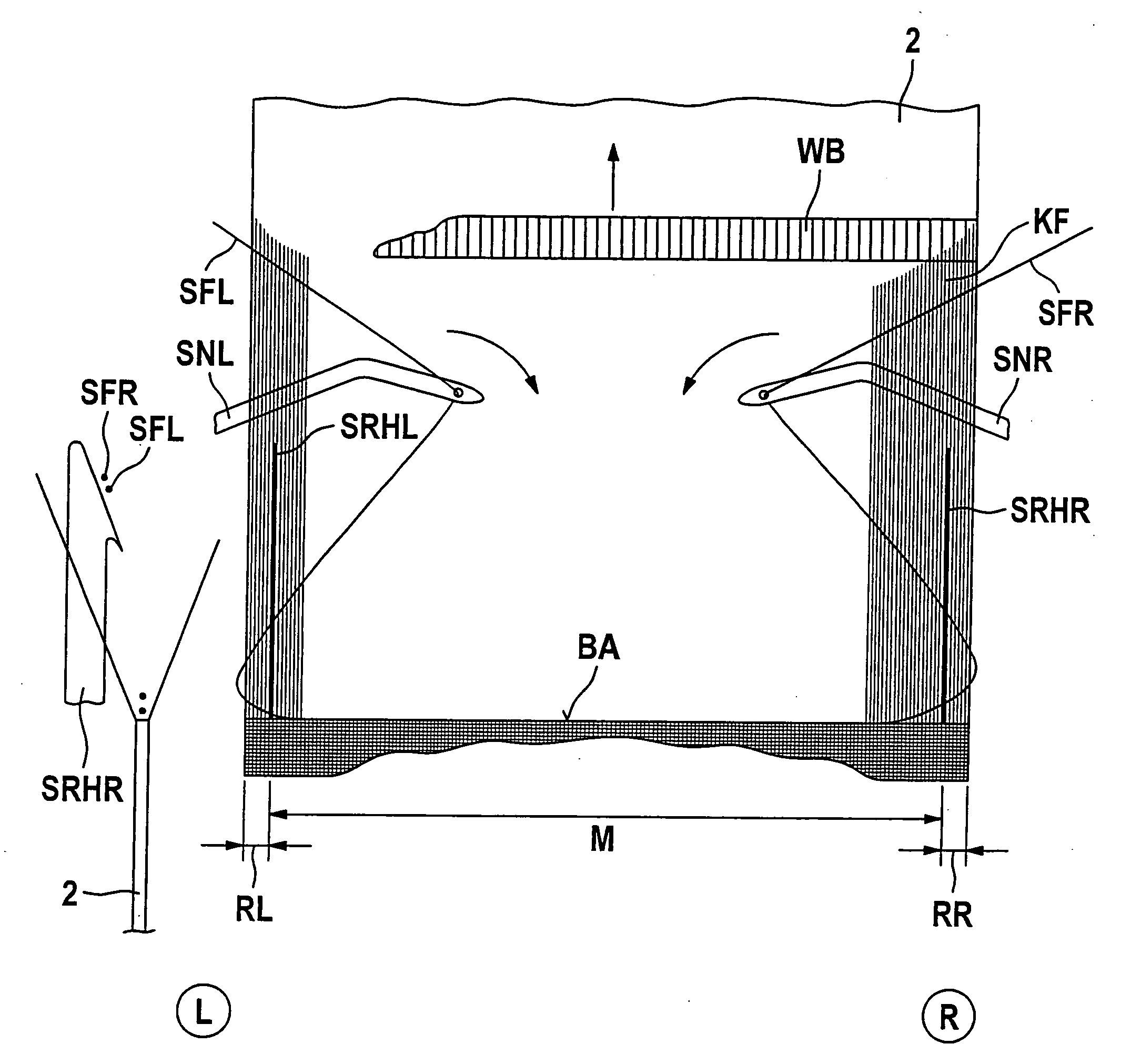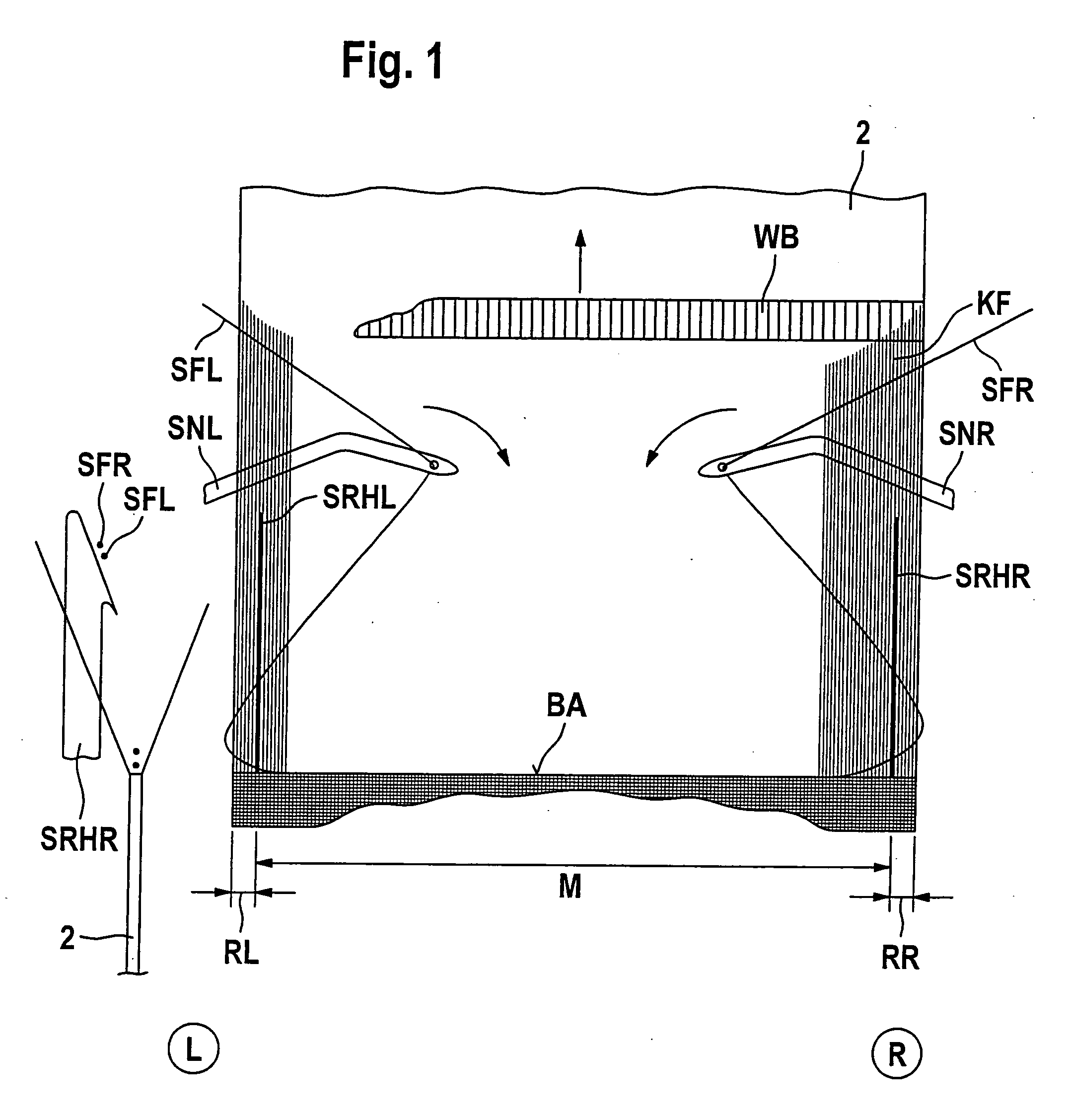Seat Belt Webbing, Method and Narrow Fabric Needle Loom for Production of Same
a technology of fabric needle loom and seat belt, which is applied in the direction of weaving, textiles, textiles and papermaking, can solve the problems of difficult operation, difficult to master the operation of known devices for producing webbing, and inability to achieve much less than twice the output, etc., to achieve the effect of facilitating the sliding down of weft threads, easy lifting, and soft selvedg
- Summary
- Abstract
- Description
- Claims
- Application Information
AI Technical Summary
Benefits of technology
Problems solved by technology
Method used
Image
Examples
Embodiment Construction
[0055]Referring now to FIG. 1 there is illustrated a seat belt webbing 2 the right and left-hand sides of which correspond to the right and left-hand sides of the drawing in accordance with the capital letters R and L evident encircled below FIG. 1. This applies to all figures as discussed in the following. The seat belt webbing 2 is divided into three portions, a left-hand edge portion RL, an inner portion M and a right-hand edge portion RR. Arranged in each transition portion between the left-hand edge portion RL and inner portion M and between the inner portion M and the right-hand edge portion RR are so-called weft holdbacks SRHR (right-hand) and SRHL (left-hand) evident from FIGS. 2 and 3 by their retaining point symbolized by a thick, black dot. These retaining points are the auxiliary holdback points which by their function lead to each weft reversal points opposite the weft picking side which are located within the material of the seat belt webbing in accordance with the inv...
PUM
| Property | Measurement | Unit |
|---|---|---|
| Time | aaaaa | aaaaa |
| Elasticity | aaaaa | aaaaa |
Abstract
Description
Claims
Application Information
 Login to View More
Login to View More - R&D
- Intellectual Property
- Life Sciences
- Materials
- Tech Scout
- Unparalleled Data Quality
- Higher Quality Content
- 60% Fewer Hallucinations
Browse by: Latest US Patents, China's latest patents, Technical Efficacy Thesaurus, Application Domain, Technology Topic, Popular Technical Reports.
© 2025 PatSnap. All rights reserved.Legal|Privacy policy|Modern Slavery Act Transparency Statement|Sitemap|About US| Contact US: help@patsnap.com



